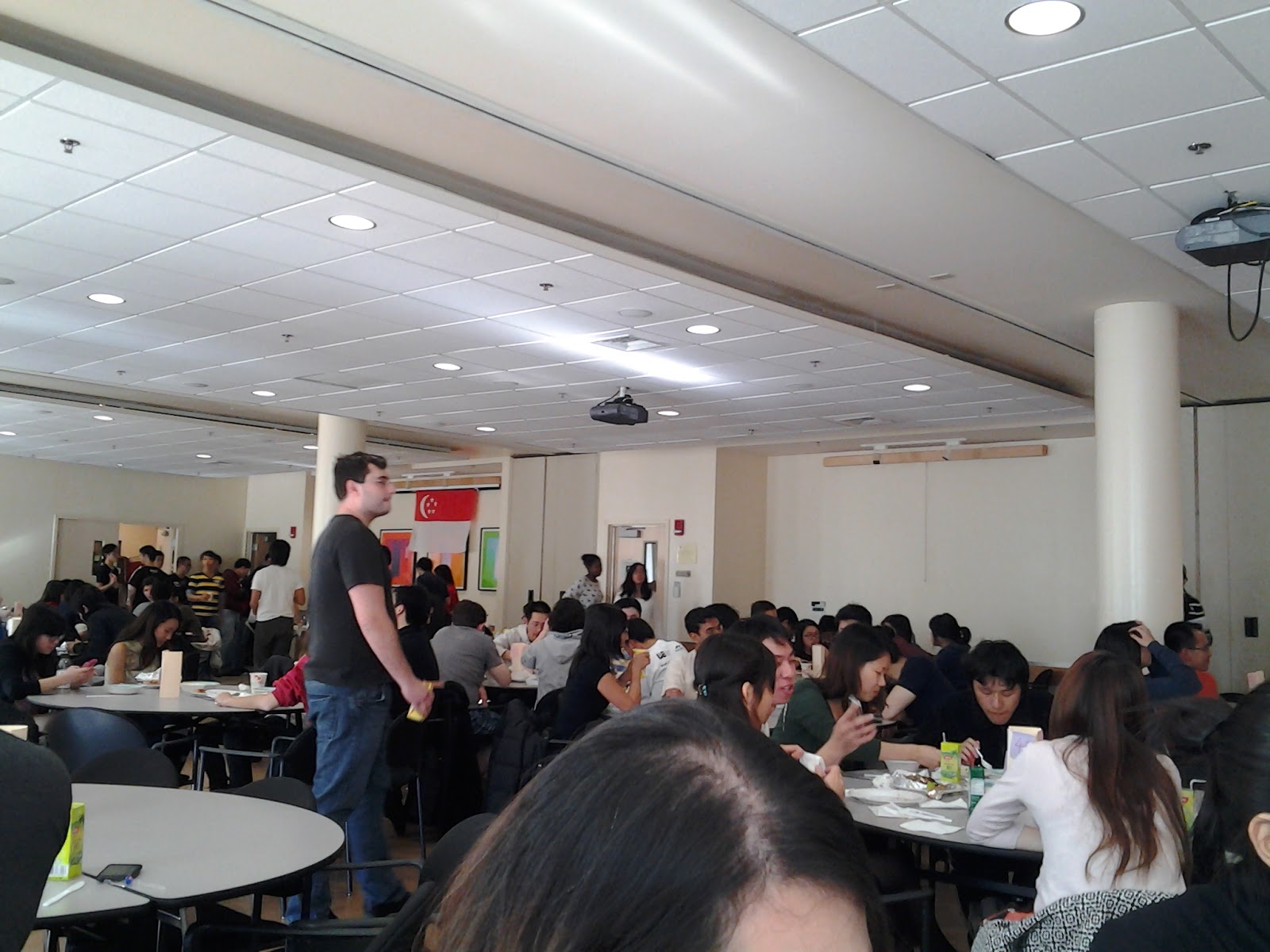As noon approached on a recent Sunday, a line of people began to form outside the multi-purpose room in the M.I.T. Sidney Pacific Graduate Residence. These people were mostly from Singapore, queuing patiently, as Singaporeans are known to do, for good food. The rich aromas of cooking curry mixed with various aromatic spices began to waft from the doors. The chatter grew louder, more animated, until it abruptly fell to an absolute silence as a student came out of the multi-purpose room and calmly began to instruct people what to do once they went in. Then, the line started moving. The kopitiam was open for business.
The kopitiam is the largest annual event organized by the M.I.T. Singapore Students Society, attracting over 200 people each year on average. The society was founded in 1986 by Singaporean students at M.I.T., and has since become the biggest Singaporean student group in the Boston area with almost 200 members, including students from Boston University, Harvard University, Tufts University and Brandeis University, according to society president Yun Liu. ‘Kopitiam’ is the hybrid name for almost every coffee shop in the residential areas of Singapore, derived from kopi, a Malay word for coffee, and tiam, a word for shop in the Chinese Hokkien dialect. The M.I.T. kopitiam has been running for at least four years and is the only profit-making event for the society. Other events held by the society include a welcome barbeque at the start of the semester, and a Chinese New Year celebration with catered food. “Singaporean events are always food events,” said Kelvin Ng, one of the lead chefs. On the day of the kopitiam, the students “basically run a coffee shop,” said Liu.
The multi-purpose room slowly filled up with customers as the line of people made their orders at the entrance and found seats at the round tables. Swinging doors barely concealed the flurry of activity in the kitchen as student volunteers hurried in and out, bringing orders to the tables. Items on the menu included regular kopitiam fare like laksa (a curry-based rice noodle dish), chicken rice, vegetable curry, as well as favorites like chili crab, sambal sotong (squid in a spicy paste) and goreng pisang (fried bananas).
“When we cook, we try to recreate the taste that we remember from Singapore,” said Liu. That’s not as easy as it sounds. The students held ‘rehearsals’ to practice making each dish before the event, according to Ng. During the rehearsals, they worked on “optimizing the recipe and obtaining feedback for the dish,” Ng said. Some of the optimized recipes will be recorded down to the last detail, including the brand of each sauce required, and taking photos of the ingredients. The students also relied heavily on their own cooking experiences, on feedback from Singaporean friends, and, whenever they get the chance, from their trips back home where they can taste the real thing, according to Ng.
They also depended a lot on their seniors, who passed down information about supermarkets and ingredients. “They tell us where to get certain items, which brands to get,” said Lionel Moh, another lead chef. The seniors advised them to stock up on rare items like certain brands of chili paste or sauces, and to “always have a second choice, another brand or a substitute” for every ingredient, just in case a last-minute shortage occurs, said Moh. However, when that happens, the students have to tweak their recipes again.
According to Moh, who attended the University of Illinois, getting ingredients is “a lot better” in Boston, with many Asian supermarkets that are accessible by public transport. Still, the students depleted the stocks of sambal belachan, a thick, spicy paste based on dried shrimp and chili, at Kam Man supermarket in South Bay.
Sambal belachan is a key ingredient in laksa. The students had to use a substitute when the belachan ran out, and the laksa “didn’t taste like the laksa back home,” said Theresa Lim, a Singaporean graduate student at Boston University.
Another dish that required more work was the chili crab, one of Singapore’s signature dishes, in which crabs are stir-fried in sweet and savory gravy. The elusive chili crab gravy is based on tomatoes and chilies, but there is a full-bodied layer of flavor over it which no one in the society has been able to pinpoint, according to Ng. The students have been trying to make this dish for four years now, and the recipe is still not optimized. According to Ng, their crab supplier, Sunny Seafood at Boston Harbor, knows that “every November, there will be this group of Asian students who buy a lot of crabs.”
The students may not be able to reproduce truly authentic Singaporean food, but “it’s nice that we get to see and taste all the Singaporean dishes again,” said Lim, and “just to hang out” with other Singaporeans. They know that each year, for one day in November, there will be a kopitiam in Boston with the tastes of home.
